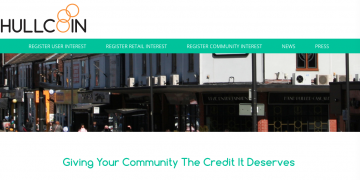
Fans of blockchain technology have been quick to espouse its benefits, and some industries such as the financial sector have been almost as quick to recognise these. The power of blockchain technology resides in its key characteristic of decentralization. The fintech industry has been on of the first to employ and experiment with blockchain. Other projects coming from the non profit sector, are also trying to deploy it locally. Blockchain could bring benefits in society for example as community currencies. Actually blockchain and community currencies have a lot in common. If centralized currencies serve centralized production, regional currencies represent a democratization of currencies, supporting local businesses and educating consumers about how their money circulates in the local economy.
According to an interesting study conducted by the NEF in 2015 Community currencies can be a great way to support SMEs, a way to promote equality and to counter inequality and social exclusion. Combining blockchain with community currencies, can take these to the next level.
Through employing cryptocurrency-based solutions, built on blockchain technology, social capital can be built and local society can benefit in ways that it might not otherwise be able to. In explaining how this can work, it is helpful to consider some project examples.
There are a number of projects already underway where blockchain is being leveraged for local currency development. One such example is known as “HullCoin”. This project resulted from a piece of research undertaken by Hull City Council that explored how the disruptive technology underpinning bitcoin could used as a local currency to support communities in Hull affected by poverty. This is a cryptocurrency that is going to be used to pay for services that benefit the common good. The aim of this is to reduce poverty, and ensure that resources go where they are best needed. HullCoin can be secured by individuals undertaking activities that are sanctioned through organisations on the app, and this information is stored.
The coin they earn can then be redeemed via various retailers. All jobs are not necessarily equal. What is meant by this, is that greater rewards or discounts can be offered for carrying out certain kinds of tasks that might be less savoury or appealing for some – for example, picking up litter.
-
HullCoin resulted from a piece of research undertaken by Hull City Council that explored how the disruptive technology underpinning bitcoin could be used as a local currency to support communities in Hull affected by poverty.
Building on blockchain capabilities, InvolveMINT is another local currency that is being used for societal benefit. This currency is operating in Pittsburgh. Similarly to HullCoin, InvolveMINT allows its users to find volunteer opportunities and projects they can work on, and give their time to. Through doing so, they earn cryptocurrency for each hour worked. The app is used to track skills and time. The cryptocurrency can then be redeemed with a range of different partners that InvolveMINT has signed up. This benefits the local community because again, projects might struggle to get sufficient volunteers in other ways.
Writing for Resilience.org, Robert Kauffman argues that these types of projects can work well with blockchain because they are aligned with the development of a healthy economic system in local areas. The principles of currency are applied within these projects. The principles of currency are that it has one purpose, which is to allow exchange (purchase and sale) of goods and services, and that it must have value which is well understood among those using the currency. Other principles of currency are that they are transmittable and that they provide credit. As can be seen with these projects they meet all of these requirements. People provide services for which they gain cryptocurrency (value) which they understand because they can see how this can be redeemed at retailers (making the currency transmittable) and held as credit until such a point as they decide to use them.
-
InvolveMINT is another local currency that is being used for societal benefit.
With these two examples one has a glimpse of how community currencies can be transformed and taken to the next level in the future. Given the tremendous benefits that such blockchain projects could bring to local communities in terms of generating social capital through local cryptocurrencies, it is likely that it will not be too long before we see many more of these types of applications of blockchain. Overall, the benefit will be healthier, happier communities.
Article written in collaboration with Maria Fonseca

Paula Newton is a business writer, editor and management consultant with extensive experience writing and consulting for both start-ups and long established companies. She has ten years management and leadership experience gained at BSkyB in London and Viva Travel Guides in Quito, Ecuador, giving her a depth of insight into innovation in international business. With an MBA from the University of Hull and many years of experience running her own business consultancy, Paula’s background allows her to connect with a diverse range of clients, including cutting edge technology and web-based start-ups but also multinationals in need of assistance. Paula has played a defining role in shaping organizational strategy for a wide range of different organizations, including for-profit, NGOs and charities. Paula has also served on the Board of Directors for the South American Explorers Club in Quito, Ecuador.


























